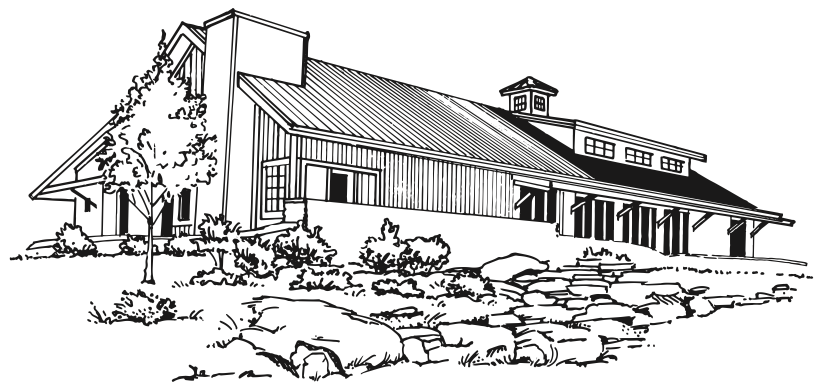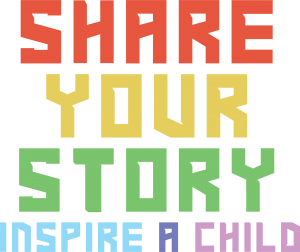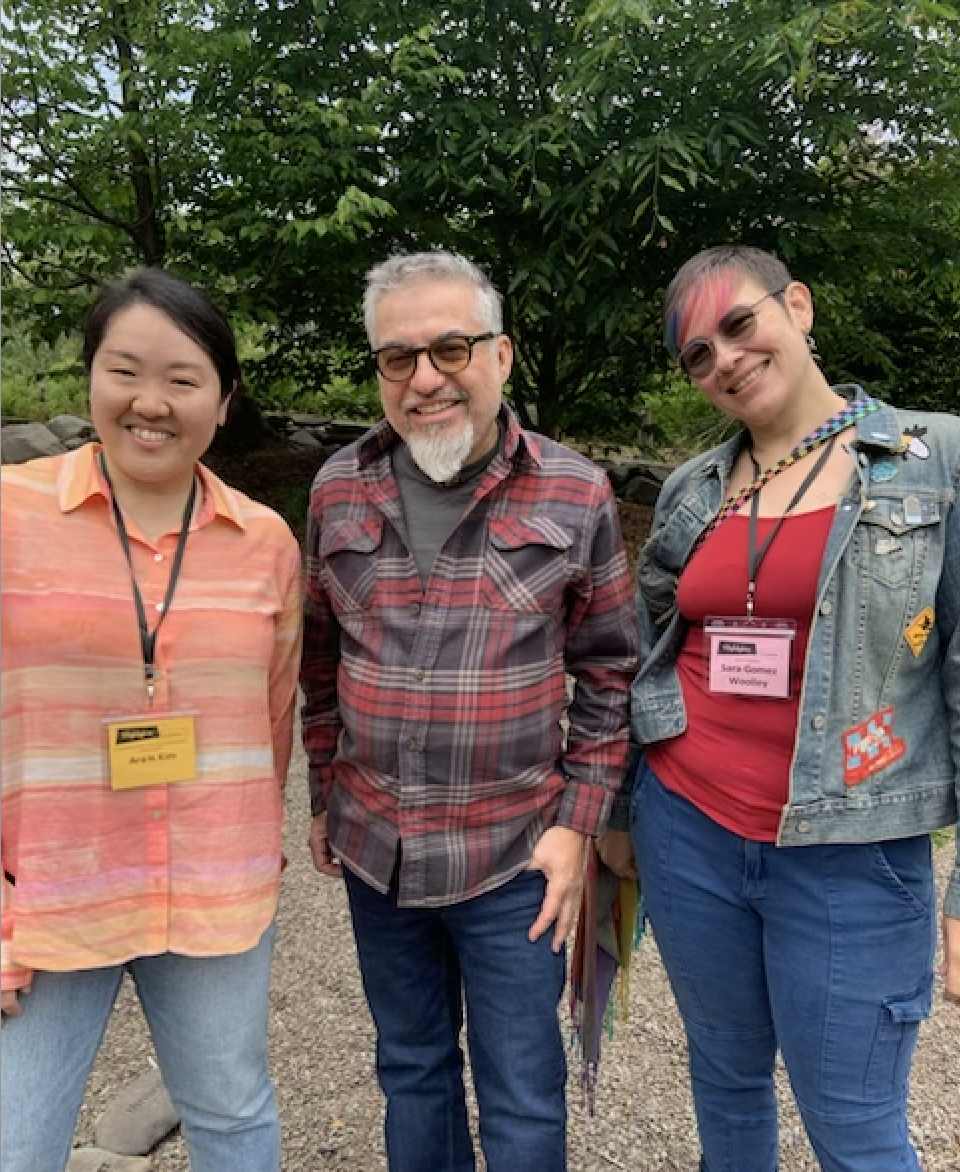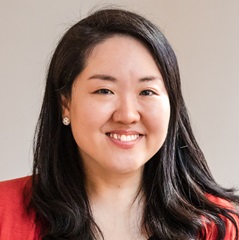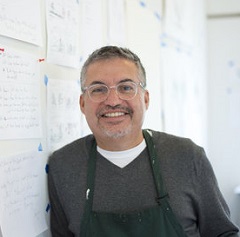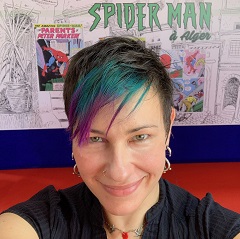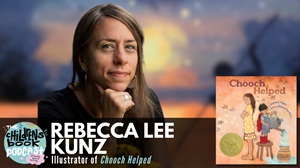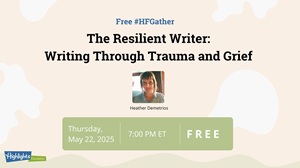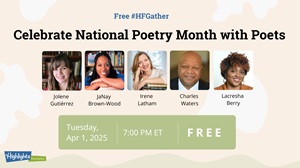What You’ll Find In this Podcast
Illustrators Sara Gómez Woolley, Joe Cepeda, and Aram Kim joined George Brown on our podcast to talk more about their work style, upcoming projects, and insight on their visit on campus.
Podcast Highlights
Aram Kim discussing what works best for her work style:
I haven’t had any studio space for like over 10 years but I do have two desks at home, one desk for my daytime job and then a separate desk for my personal work.
Sara Gómez Woolley on creating art on top of her full-time job:
For me, if I’m not making art, then I’m completely unhappy. Like my self esteem and my art making are completely linked, so if I’m not actively a maker, then I’m not fulfilling my purpose.
Joe Cepeda on the risk factor as an illustrator:
Anyone can kind of connect to when you’re doing something like that you feel alive….all your senses, you know…if everything can be predicted, then it’s not going to be so much fun.
Full Transcript
George: Hi everybody, this is George Brown at the Highlights Foundation. I just recorded a great podcast with Aram Kim, Sara Gómez Woolley, and Joe Cepeda. They are illustrators who are here visiting us for our in company retreat at the Highlights Foundation Retreat center. We had a great chat about their work as illustrators, how they work, where they work, and a really just a wonderful overall conversation about the, their work, work as it relates to illustrating books for kids. I hope you’ll take a listen. Welcome to the Highlights Foundation Gather podcast, where our mission is to positively impact children by amplifying the voices of storytellers who inform, educate, and inspire children to become their best selves. Today’s podcast guests are Sara Gómez Woolley, Aram Kim, and Joe Cepeda. Welcome.
Joe: Glad to be here.
George: So let’s see three illustrators. We’re going to talk about art, art making, et cetera. You’re here for in company, which is a community retreat for authors and illustrators. And we’ll talk a little bit about kind of the, the I guess the vibe and what this this workshop is about, but maybe we could start with just some introductions. So we get to know you and your work and kind of what you do. Sara, will you start for us please?
Sara: Sure, well, thanks so much for having me. So my name is Sara Gómez Woolley. I am an illustrator and an author. I am currently working on a graphic novel. While here, as an artist resident at the Highlights Foundation, which is about my family’s immigration from Colombia to the US and was co-authored between myself and my mother. And I’m also a college professor for the New York City College of Technology, where I teach Illustration and comics.
George: Awesome. Thank you.
Aram: That was such a good. Intro. I can’t help that.
Joe: I know like it was so smooth and articulate.
Aram: I know.
Joe: I was like watching it though.
Aram: My name is Aram Kim. I’m an author illustrator of children’s picture books. And also I am an art director at Macmillan Children’s Publishing Group and I’m going to leave at that.
Joe: I’m Joe Cepeda. I’m a children’s book illustrator and author. I spent most of my career illustrating other people’s manuscripts, but now I write as well. This is my second time physically here, though I guess the 4th year I’ve done this. And this year is particularly interesting because this group is focusing on, uh, established, kidlit people. So it’s kind of great to be here for that.
George: And you started yesterday Joe with the talk about kind of finding creativity or how creativity around you will you give us just a little snippet of kind of what that was like.
Joe: Allison, who is here as.
George: Alison Green Myers, our program director.
Joe: There you go. She gave me a call a few months ago, suggesting that I might be a good candidate for this particular workshop. Since I had an experience midway in my career, if you will, that sort of changed gears for me creatively and that’s kind of what I talked about yesterday that um, even though I had been working for so long in this creative field, if you will, that by going away to a residency, a place here, kind of not too different than this lovely place. I was kind of forced to realize that I was kind of like on a machine, if you will sort of. I use the word end games that everything around me sort of had sort of parameters or limitations that whether were overtly affecting my work or maybe just below the surface. And that kind of really spurred my new enthusiasm and new direction career wise that, I started really writing on my own, started to go back to those earliest moments when I started to make pictures and invention seemed to be really close at hand. And so that’s kind of what I talked about yesterday and how you keep that going like how do you once you’ve had maybe an aha moment like that, how do you regenerate it every day or as much as you can?
George: And I think that was one of the pieces I really liked about the talk. It’s like you had to go on retreat to clear your mind enough.
Joe: Right.
George: But it’s not like you can live on retreat.
Joe: Right.
George: If you were trying to figure out how to replicate that in your work space. And I see, so Aram how let’s talk a little bit about your life and your work and kind of how you do that, right? You’re working full time.
Aram: I am, so I come to Highlights to get my work done and that sounds kind of insane but it is true. So I do have a full time job as an art director in publishing house, which was kind of an unexpected path for me. I started working in the design department of Publishing House 10 years ago. When my sole purpose was actually learning the secrets of the industry, get out and publish my own books. But when I started working, actually I fell in love with working with people in publishing houses because it was such a collaborative process. I got to work with these amazing illustrators that I always admired. So it was just a great experience all along and I ended up staying. And that has been pros and cons. In my author illustrator career, but more pros for sure. Like the only con I would say is that time, but that’s the challenge for a lot of artists anyway. So I basically work 9:00 to 5:00 and then I change gear in the evenings and the weekends, and that hasn’t been very hard for me because that’s when I really come to life, I think like working on my own books so it didn’t feel like any labor after like a four days of work. But it has been changing a little bit as time goes by and as I get older it has been harder on me. So I slowed down a lot. I feel so, I do work much slowly, which has been a little bit of a pain point for me, but in this retreat, In Company, Jennifer Jacobson actually talked about working slowly and then taking things slowly, and how not to rush on things to finish. And that was very inspiring to me that I didn’t need to feel pressure. Constantly produce something, and she did mention that it is a privilege that we can work slowly and I agree, and I think that is also one of the pros that I have that like working in publishing house. So I do have my creative work going while I don’t need to rush to finish your projects of my own, but it is a constant struggle and coming to Highlights once or twice a year does give me such a great outlet to really focus on my creative work and I do get a lot done even for a couple of days here, which is amazing.
George: Which is interesting because I think you’re usually teaching when you come, so you still, even as teacher, you still have a time to explore your own creative work.
Aram: Not always, but, even if I have one day, I think just changing the pace and just being in this environment which had helped me a lot at the time just gave me like the energy to work and I know that this is the time that I can get work done without any distraction. So I think that also gives me a motivation to really work, like focused so then I get to get a lot done, which is great.
George: And at home so during the week. You will try to get actual artwork accomplished in the evenings.
Aram: I try. Wait, different from getting it done? When I try, yeah.
George: OK, sure. And then you’ll put some time in on the weekends typically.
Aram: Typically, but not always.
George: But you’re feeling OK? You’re giving yourself permission to not.
Aram: Yeah, so far it has been OK. I mean, like I it has been actually like almost more than a year of break from me working something under solid contract which would give me a little bit of jitters before. But then now I’m trying to accept it and I think it has been actually good for me.
George: And how about your work, Sara? Because you’re teaching all during the school year. Are you making art in addition to that?
Sara: I am I have to be. I mean, if I’m not so and I bet you guys share this, but for me, if I’m not making art, then I’m completely unhappy. Like my self esteem and my art making are completely linked, so if I’m not actively a maker, then I’m not fulfilling my purpose. So, but that’s really separate from being an illustrator who makes a living.
George: Right.
Sara: Off of art making, right? Those are two different things, so as I have so much respect for you, Joe, for any freelance illustrator who makes their living as a freelance illustrator and that is the bread and butter that is on their family’s table. That’s how their kids are going to school. That’s everything that is so hard to do and also to do it and have it be full of soul. To have it sing, that’s amazing.
Joe: Well it you know I I got I got to say it it certainly has been a roller coaster right in that in that regard. And there was some lean times and having a partner who had a job, you know, helped a lot of those times. But yeah, I haven’t had a job other than illustrator for like 30 years. So yeah, that that is something that has been interesting.
George: And you, it’s different, you tend about it like a job like you, you talk in and out.
Joe: Yeah. Oh, yeah.
George: And you’re not, you sound very much like you’re doing a nine to five kind of a job as opposed to late into the evening.
Joe: You know it’s very much, it may have been because that was my upbringing, you know. In many respects, being an artist was like not even in the realm at all. Like no one when I grew up, it was all very blue collar. Most people went to work and that I lived around worked in a factory or something. So I saw my dad get up at the crack of dawn, I saw my mom go work as a teacher’s aide at a school that just seemed what you do. So after sort of long route through college, when I decided to do this, I kind of just assumed that would be working like that. And may it probably benefited to me that I came at it already a little bit more mature because I was ready to turn it into a job. You know what I mean, into work. So I thought about creating the studio, I thought about how I would this job if I had a child or if I was, whatever. So I think in the very beginning I constructed it that way and then just dealt with the difficulties, the ups and downs of it as I went along. I just always have thought it was a job or like you say, call my studio a shop. You know, I sometimes I do that purposely for that reason.
Aram: I really respect that. Yeah, I think that is actually my ideal artists like how they work like they do take it as a job, not just their ego like to achieve their like artistic ego which is I think important too. But then I really respect the artists who take it as a job and really fulfilling it and doing that nine to five. I really like that because that does give you this plain. It doesn’t go off like 3 in the morning and then because it has to be sustainable, it’s like a long term like a marathon that you need to do not something that you do when you are young because you can’t do like all nighters like yeah, as you get older, I do like that this plain very much. I really respect that.
Joe: You know, I I think it also most of us start out young and we have the freedom to or you know what, we’re start aren’t making to maybe be a little bit more everything from being experimental to working late at night or whatever, but then you’ve got a family at some point, right? And you’re in that place, perhaps in the middle of your career. So it just didn’t seem to fit that I would be working late at night somewhere else from my family or whatever. But now my son is grown and all that. So I’m almost coming back to it a little bit with a little bit more flexibility, but there’s a lot of years where you do that so it did prove helpful even if I wasn’t necessarily doing it by design. It’s either like, am I going to do this or am I going to see my family? I gotta figure out how to organize my life that way.
Sara: Right, you only have one life and only so much time, right?
Joe: Yeah, exactly.
George: Right. So and part of that you talked about workspace too. And so I’m interested, like to hear from Aram and Sara. Like, what are your workspaces like? Do you have a workspace, Joe, you really talked about the modular-ness of it.
Sara: Well, I have a couple of different spaces because I feel like I kind of I have a foot in a couple different. I have one life, but I’m a professor in one space and then I’m always an illustrator, but there’s points where my more focused on my own illustration, writing and then points where I’m focused on enabling other people and so my workspace at the college, you know, I have a cintiq, it’s all digital. I’m teaching digital illustration and much less in terms of hand skills and so my setup there is very technical um and focus on getting illustrators who are able to create work on deadline understand the Adobe suite are able to work great with our directors or you know have all of that. And in New York, when I come home from work, I find that I can illustrate things I can draw, I can paint, but I have a very hard time conceptualizing new work for me, Highlights and also my summers in general and summer at Highlights even better is a space where I can conceptualize new work, and so I can write I can come up with ideas. Yes, the school year is about executing things usually.
Joe: Right.
George: So if you have it somewhat laid out in your brain or on sketch, you can then work throughout the year.
Sara: Right. Which is why the summer here is so impactful for me. I’m doing my hand work, my conceptualization. I’m writing, I am storyboarding, I last summer I storyboarded 175 pages of my book, like which I could only do a fraction when I got home. So I’m more if what I do here feels more like a traditional art studio. I find that when I’m working traditionally in New York, it’s more about I’m going out and I’m drawing what I see just to be able to access that kind of meditative state you were talking about.
George: And what are you, what were you using? Is this all pencil sketching you were doing last summer in the summer?
Sara: Pencil sketches, pencil sketches and then importing them into Procreate to drop in some values, but basically pencil sketches all summer.
George: And Aram what’s, what’s your work style?
Aram: I always work from home, so even when I had a studio space as a student, because the schools would give you your own personal space, even then, I just couldn’t get good work done in that studio and I cannot figure out why It could be like a lot people around or I think I work the best by myself at home, so I always ended up working from home. So now I haven’t had any studio space for like over 10 years but I do have two desks at home, one desk for my daytime job and then a separate desk for my personal work.
George: Oh, I love.
Joe: That love, that thing.
Aram: Yeah. Yes, right, I can’t, yeah, I just can’t stay in same desk doing different work.
Joe: Right, yeah.
Aram: It has to be separated even by like 2 steps away, yeah.
Sara: If I can zoom off of this computer, I’m not, also, making art on this computer.
Aram: OK, I have separate computers. I have separate desk, It’s just yeah.
George: I love that.
Joe: I guess we all kind of do that to a degree because even though I have created this big space or whatever, sometimes I get cabin fever, if you will. And I’ve kind of reserved like once a week busy breakfast counter, you know, at a restaurant a few blocks away where I take my sketchbook and I solely work on, like, maybe coming up with an idea or just free drawing or whatever. And hearing the clatter of dishes and stuff kind of spurs, that kind of thing. And I kind of reserve that for that and we were talking about plain air painting and going outside and how that can feed you too. And I’ve done that a little bit. When I go camping occasionally or however it, you know, you kind of, I think you do compartmentalize a little bit. It’s just the organization of it all. And I whether by design or you just figure it out. Some things favor a way of working more than others, like having two desks. That’s great, yeah.
George: And how soon are you going digital Aram?
Aram: Oh, so it has getting earlier and earlier in the stage and I am actually trying to go back to paper and pencils because I have been on digital a little too long I feel like and that was to mostly save time and in a way that my pencil work on paper doesn’t look too different from my digital work anyway, so I just thought, well, if they look the same, then why not just do it more efficiently? And that was also from the time that I had to go into the office to work because I just didn’t have enough time. So I started working in the subway. So in order to work in subway, I started using the iPad so that I just like save time. But then now I’m fully remote. I don’t need to commute, I don’t need to work on iPad. And I really do miss that feeling of pencil on paper, like using just like hand touch, right? So I think all otherwise miss that too. So I’m hoping to go back a little bit earlier stage that I used to do more pencils and pastels and scan them into color digitally. But yeah, my last most recent book was most or, like almost 100% digital, even though I still sketch with pencil, I cannot sketch on iPad somehow.
Sara: Same here.
Aram: Yeah, yeah. But I do wanna do more finer art on paper as well. That’s the that’s the goal.
George: And so first of all, tell us the title of that book, so that all of our listeners know.
Aram: Oh, that’s called Tomorrow is New Year’s Day that came out yeah, last December about Korean lunar new year. Thank you for asking.
George: And so was pretty much all of that work done on an iPad or did you do with the cintiq?
Aram: iPad and Photoshop, yeah, I don’t use cintiq, but then yeah, my iPad is pretty small because I got it for the commuting, for the subway. So it’s not a big iPad that a lot of artists use, so I start small but then because it’s so small, I have to actually move to computer to look at the details and finish up there.
George: And is it just an Apple pencil you use with.
Aram: On the iPad and then on computer, just the tablet.
Sara: Like a Wacom
Aram: Wacom tablet. Yeah, I forgot the name.
Sara: That wasn’t an ad for Wacom. Leon’s just fine too.
George: And Joe in the in the photos you showed of your studio, it looked like you’re doing a lot of what’s the word reflective work before you get to scans like there’s a lot of a lot of paint.
Joe: Well, so I, you know, I deliver books in both traditionally, namely oil paint. I’m largely an oil painter, but I do work digitally as well. And I’m lucky enough to have of a drawing station, a painting station and a computer station so you know and space to move around a little bit. So most of the books I’ve done over my career are traditional, but I haven’t drawn a book dummy on paper in a while because it’s just so efficient to working with an editor and our an art director to be able to send digital files back and forth and alter.
Sara: So you’re not conceptualizing on paper.
Joe: Um, yeah. I I think when I’m at the breakfast counter or something like that and I’m coming up with ideas. Yeah, but once I’m ready to draw and draw that dummy, it’s on, it’s digital.
Aram: Also, it’s so easy to revise when you get feedback like very quick revision that you can just like send it right back.
Joe: Right. Right. Right. And you’re right about how the pencils, the digital pencils look just like a pencil, and sometimes I purposely do that and you know a cintiq or no ad for cintiq either, but just as comfortable as I resisted going digital for a long time when the Pat, how do you describe that the pencil was down here and the screw the tables down here and the screen was up there. It wasn’t until I was at a conference and I could actually draw on the screen then I said OK, I’ll move digitally and now this will help me as a tool and then it was a long time before I did any finished artwork on it for the long time all I did was just do pencil drawings or whatever for dummies which maybe I paid a lot of money for over technology or you know I was over technologized. That’s not a word. But anyways, but eventually I grew into making digital art as well finished art.
George: But so before, as you were walking in you were talking about artwork on fire or something but like, are you still then delivering paper artwork, or do you wind up scanning?
Joe: Yes, as well. Oh, no, I’m scanning now because it’s just so nerve wracking packing. You know, months of work, oil paintings in a box, sending them across the country and crossing your fingers that nothing happens because what we were talking about is that I’ve actually lost like at least three different works are um in various ways, one of which was the artwork being burned up on a plane that went up in flames on a New York Tarmac. Luckily I’ll be on the return to me, not so much headed out. So the idea those are just individual pieces, you know, for I forget what projects but the thought a book.
Sara: Big insurance claim on that, yeah.
Joe: The thought of a book going, you know like 32 pages of art, that’s just terrifying. So now I scan them locally to where I am, and then they send the files and you know that that’s workable.
Aram: When I started in the publishing house for the first time 10 years ago, one of my jobs was actually going to artist studio pick up the order.
Joe: Oh there you go.
Aram: Coming back to the office, that kinda thing.
Joe: So they were probably making sure crossing your fingers that you didn’t get in a car accident, your drive, your car.
Aram: I yeah, yeah. Yeah, exactly.
George: Let’s talk a little bit about the projects you’re working on now. So you started, Sara, but tell us a little more about this, you didn’t even tell us it’s a graphic novel.
Sara: OK, so I’m working on a graphic novel, the mostly true memoirs of Esperancita Gomez, and it’s been a project I’ve been working on now, honestly, for over 10 years. The original inception was a short story that my mom wrote that I found while I was laid up with a twisted ankle in her apartment and read it overnight and was completely shocked by my own family history. We didn’t talk about my family’s history when I was a kid. My grandfather was a political organizer for the leftist candidate in Columbia in 1948, a man named Kaithan, and through my grandfather’s political leanings. The entire family had to leave Colombia and so I had no idea my mother was a political refugee or that she came quite literally with one additional outfit besides what she was wearing on the plane, no idea. So through that one short story, that kind of led to this, you know, applying for a small grant to go do some research, which led to uncovering more, which led to another grant to do more research and then it is now long story short. I guess. Short story long, it’s now under contract with Lee and Low books and it is a story which you meet the main characters Esperancita, when she first arrives in New York and through a series of vignettes, she tells you how she got here, how she got to the US. And so I’ve been working on this project as an artist resident at the Highlights Foundation, thank you. Now I’m in my second summer and so I’ve been able to learn so much about myself, both as an illustrator as well as an author through being here, and I’m now in the stage where I’m finishing up my thumbnails and I am final, I’m going for another round of edits on the text that I wrote last summer and will by the end of the summer have the entire book outlined um and so my process is I am looking at a series of short stories written by my mom. And then I have woven those together into a narrative. I essentially, they are pure dialogue. And so I am cast crew setting everything for these stories. And so I draw those out on graph paper in really tiny crude thumbnails and write my text as I go by hand, because I can’t seem to be creative on an iPad. And then from there I bring them into the iPad as fast as possible so that I can create value studies to see if any of it reads right and just get a quick visual read on it. Eventually those get printed out, and then I’ll be lining them by hand and inking by hand, and then coloring again digitally. So I go back and forth between both mediums.
George: You’ll need another summer for that.
Sara: I’ve already, I’m already lining up for one.
Joe: I got tired just hearing that.
George: Wow, that’s a big project.
Joe: That’s a lot projects.
George: That’s a really big, really big, yeah. And Aram you working on a specific project now?
Aram: I am. When is this podcast airing?
Joe: Don’t give away any secrets if uh.
Aram: Yeah. No, no. Yeah, it’s not a secret, but then like the project that I’m focusing on, right now is actually what I was working on last year when I came to Highlights and that’s actually where it actually took a good shape, I feel like because it, I’ve been working on it, it’s a middle grade memoir that I’m working on with my friend, so it’s a two perspective memoir. She is a Korean American who was born and raised here, and I also now for myself, Korean American but I was born here but grew up in Korea. I’ve been living here for another 16 years after I became another, so we have very different experiences and we are sharing that with the same theme of food with the and we’ve been working on it since 2021 and it took turn like multiple times. And now I feel like we are in a really good place and we’ve been working with our editor too, but it’s not under contract. That’s why I was asking. We are hoping to submit officially in early September, thank you. I will see where that goes. So that’s one thing that I’m working on and it has been challenging because I never did middle grade. I never solely just wrote not illustrating even though this one will be illustrated. We are just focusing on riding at the moment and we had this session with the librarian, Vicky Smith, this morning and it was very eye opening to me, something that she said at the very last of her presentation how she toured us to authors, that the stories that we are writing and stories that they are review are not for us. They are for the kids who are going to read and I think that was very enlightening in a way that I’ve been feeling that I been writing with my author voice. So I kept looking back on it while I felt like it really should be written in a voice of younger me when I was at that time. So that’s what I was struggling, but when I heard that she say it like just explicitly that it’s not for you. I think that was very eye opening, you know. Very yeah. So that’s what I’ve been trying to get more work done in Highlights and I am, actually I gotta work on a picture book as
well. Yeah, it is actually the it’s, it’s one of the series that I’ve been working on lately No Kimchi for Me, Let’s go to Taekwondo, Sunday Fun Day in Korea Town and this will be the 4th book. See, I got all my titles you know.
George: So this is one that you know and it’s, it’s getting it send to completion.
Aram: Yes, yes, yes.
George: OK. OK. And Joe, do you work one at a time or do you work a few things at a time.
Joe: I’ll do multiple things at once or a couple of projects, but that’s not usually the case. However, it is the case right now, although I just finished one of them and it’s on a plane right now, or it’s already taking it.
Sara: So carrier pigeon.
Joe: No, it’s not on a plane, right now my son is driving it over to the photographer. I just finished the book. It was really labor intensive. Um, because I painted it. It was just a lot of work, a lot of hours, but and now I’m and I’ve been working at the same time. Although the painting really overwhelmed the time more than this particular project, and it’s got a little later deadline. A graphic novel for young reader. I’m not really good at figuring out exactly what they’re for, but or you know the genre specifically. But for a young reader, it’s my first attempt at something like a comic book or graphic novel, and it’s called the best excuse me, The Best Worst Camp Out Ever. A boy and son go camping and I wrote both of them. The picture book is entitled Sumo and Libre, and it’s about a boy who loves lucha libre wrestling and a boy moves in next door who loves sumo wrestling and they become great friends because of their mutual love of wrestling. Of course, until one day they have a difference of opinion, which ones better, and they have their differences and whatever they separate themselves, if you will and then they realize being a wrestling fan is more fun when there’s someone else around, so they decide to invent something new and they invent Sume Libre and the whole neighborhood comes and enjoys them. Yeah, yeah.
Aram: They are both really good titles.
Joe: Yeah, someone falls right off your lips, right?
Aram: Yeah, yeah, yeah, yeah. And also the best at first camp ever.
Joe: Yeah, yeah. So I’m yeah, those are like at the tail end now you know, they’ve all been written.
Aram: Yeah, yeah.
Joe: I wrote them and all of that. So I’m really looking forward to get getting those in the can and working on some other things that I have in mind.
Aram: So when you paint, do you always paint in oil most of your time?
Joe: If it’s, I’m if I’m painting. Yeah, but I will say this. I do the Underpainting in acrylics because.
Aram: OK.
Joe: It’s just faster. It dries quickly and I could be what’s we’re really aggressive with color and so it’s almost like negative in photography. You know where everything looks backwards like lights are dark and darks are light. Well, I kind of paint with the opposite colors, so trees might be you know, I don’t know instead of green, they might be red and all this and then when I paint in oils, I lit that under painting show through. But what I like about that is when I am doing this under painting it looks really strange you. It’s almost not recognizable other than the forms, but it allows me to work from this sort of chaotic color thing as opposed to just working from white or even a, you know a ground like a middle ground or something like that, so it’s more responsive. I never do color studies, I don’t like to know what the color is going to be because you know it’s so hard. You know, you guys know this for like designing a book and getting the sketches and all that. That by the time I move to painting, I know it’s going to be hard work. I need something new, right? I need to, to like dance, if you will and performance just like a dancer or something, right? Or practices forever and ever. Yeah, when they finally go on stage, they the energy comes from the live aspect of it, I imagine or a musician and all that. Well, I need to leave myself something too, so I generally leave color for that and I so I can live. Live in a sort of more responsive way because it’s got to be something otherwise. I already from the beginning of the painting process thinking, Oh my God, this is a drudgery. It’s it, yeah, then it’s really hard. It’s going to be hard anyways, right? Right, to get to the end.
Aram: So you need to enjoy.
Joe: So I need something.
Sara: It yeah, yeah, something exciting.
Joe: I need something. So that’s generally the painting process. Digitally of course, I’m still kind of new at that. I’m working my way into figuring out like. A process that is comfortable for me that um.
Aram: What do you use for the digital painting?
Joe: Photoshop so far I actually like Corel Painter, but it wasn’t tracking on the computer. Maybe my computer was real old and it wasn’t moving as quickly as I want. Going to buy a new computer in a couple of weeks, so we’ll see. Maybe I’ll try that again because I really liked the tools in painter, but so far it’s been photoshop, yeah.
Aram: Because, like corel painter is more close to the traditional.
Joe: Right.
Aram: Cleaning you know.
Joe: Right, right. I really like that it. It felt like something closer to what I would do. I’m not, most of my work, even when I work digitally, is not designing design based so much. There’s a couple of things I’ve done that way and I really like it for that and maybe later on I’ll get to a degree where I work comfortably that way, but I sort of like crawled into digital work by it being closer to my painterly work, and then slowly sneaking in.
Aram: Yeah, yeah, yeah, I think that’s the best way, though. Like, people who know how to really paint in traditional medium, they can really replicate in the digital form. That’s how I, yeah.
Sara: Perfect.
Aram: See it.
Sara: Right. I mean the so photos, I mean the Adobe suite looks at especially Photoshop they basically it’s painting right, it’s the idea of layers, right?
Joe: Right.
Sara: So if you think about that in terms of original painting canvas, right, your value study underneath you glaze on top of it.
Joe: Right. There you go.
Sara: If you even look at the different screen modes, some of them are named after.
Aram: Like, right, right, right.
Sara: You would yield over like for example, so it is intended to replicate the way that our brain thinks about traditional painting. Yeah, but when you’re teaching so many students have skipped over all of those traditional hand skills, so they don’t actually have that library of.
Joe: Oh, oh, makes sense.
Sara: Like they don’t have the logic right that’s already built in that Photoshop’s assuming that they have, which is super interesting.
Joe: Right.
Aram: Right, right. It is really interesting. I did have an artist I worked with an artist who said who took the watercolor class in order to use the watercolor brush digitally.
Joe: Wow. Yeah, it does make sense.
Aram: And I thought that made a lot of sense yeah, you need to know how to do all that color in order to do that digitally. But then when you’re skipping over that section, you get more frustrated because you feel like other people can do that watercolor digital painting beautifully, but you can’t and you don’t know why so.
Joe: Right, right, that makes sense.
George: Aram did you go to art school?
Aram: I did, yeah.
George: Did you? OK. And Joe, you said you’ve been to art school and Sara you’re still in art school.
Sara: I’m still in arts school. I think I’ve only left art school for maybe like maybe 8 years total, but I haven’t in some way been in some sort of educational setting.
Aram: She’s been in art school for so long that she’s getting a sabbatical like so.
Sara: That’s true. That is true, something you said. Though Joe really stuck out like that. You had to leave something to make it fun, right? Because it’s, you know, when you’re painting for yourself, when you’re drawing for yourself. You make it and it’s done, right? There’s not this person other person you have to answer to, right? It’s not a, you know, and there isn’t an art director who has said, OK, this is what’s approved. And so if you’ve made so many decisions already, then you have to leave some decisions for the end or it gets boring, right. And I feel like I do the same. So when I was saying I want to hand ink my book, which is insanity, but it’s also leaving the fun part for me and allowing mistakes to happen and not having command Z and not having a digital eraser and.
Joe: You know, I, I think.
Sara: Now I’m staring at a screen bye.
Joe: I think the other aspect of it is the risk factor because you know, we all know we all know that if we’ve had moments we were talking about hiking, camping or you know, or we’re having this conversation. I talked with my son about when I get the itch to go outdoors it’s because I need to feel comfortable with being uncomfortable, you know what I mean? And so I think, I think you know anyone can kind of connect to when you’re doing something like that you feel alive, right? All your senses, you know your, if you have to do something to keep yourself alive or whatever. However, some people thrill, seek to a far more level than I do, that’s for sure, right. But that’s the whole thing, the adrenaline, the risk factor. All of that, and I think that some of the two like you’re saying the willingness to know that you might make mistakes that now you’re performing like I said earlier, that something wrong can happen or whatever. I think that’s part of it. If you’re not, If everything can be predicted, then it’s not going to be so much fun. I think there was an old twilight zone episode and Carl Mauldin was in it, he thinks he’s.
George: You’re on your own here.
Joe: OK. No, I’ll get there. He thought he went to heaven and he’s a pool shark and he’s, he wins every. game and because he’s winning every game and in the end, whether it’s Rosaline or it turns out to be the devil or whatever, says you’re not in heaven. What makes you think you’re in heaven? Because that was the misery that he won every game.
Sara: Oh my God. Oh my.
Joe: There was no risk at losing. He you know, the thought is, you know, whatever. Right. So anyways, I know that was a stretch but.
Aram: No, that’s a that’s a good analogy.
Sara: You guys have this, but do you guys ever have the moment where you’re drawing something by hand and then you do this with your? So a righty, and you know what, I just did so I’m a righty, I’m drawing with my right hand and sometimes I make a mistake and I try to do the key command for command Z with my left, without even thinking that this is a piece of paper and a pen.
George: And has it worked.
Sara: But that’s the sign like OK lady, you need to go draw a real thing outside now.
Joe: I I’m not that skilled digitally where that, that that is ingrained in me. Yet I’m I mean like I’m like when I’m still typing with two fingers or whatever on a keyboard and I don’t know any of the shortcuts. I wish I did because I could move faster. But I’m yeah.
Aram: You’re OK.
Sara: Command Z is the only one you need.
Joe: And a pen and a whatever. That’s good. That’ll work.
George: Well, Joe, you told us about two that are titles you’re working on. But tell us one or two titles that have come out recently so our listening audience can look for.
Joe: Rafa Counts on Papa, that’s a story that I wrote came out last year. I was really proud of that because that really was kind of,maybe the first thing that I wrote that was you know, it was a picture book it, you know, I had to really write, right? I did these other books, though, you know. And I didn’t talk about this at the talk the other day. Umm, I know I had this moment at the residency, but an art director and excuse me, an editor a few years ago, asked me if I would write these books for young readers if I would try my hand at writing one and that’s when I was really thinking about writing. You know what I mean? On the heels of my residency, you know, finally getting around to it but I was still being tentative and she said, you know, Joe, these books are for the, I think they she described them as the first book a child reads for themselves. The first picture book a child picks for themselves. So I said sure, why not? I’ll try it. I never would have thought I would have done this kind of book. You know what I mean? It’s literally like 14 words in the whole book or whatever. I did one, they liked it. I did another, and then I did a fourth one and it got a Theodore Geisel Award and Honor award, right, which is great. And you know, the interesting thing is that Uhm, when I went to ALA and you know, as part of the events there, I met and at a luncheon, the people who were awarded gave that award, right. The librarians and I heard the discussion about this particular award and I never had an appreciation. I was looking at it technically and or like craft and all of that, but of the moment a child first learns to read and that magic moment, and as I heard the discussion around the table, I was a little bit overwhelmed by that and realized wow, I want to do more of these because this is really exciting to me. You know, so I did write another one, and that one actually will be coming out this year. It’s called I Help. But yeah, I was really kind of taken by that it was something that I didn’t see coming. But again, it was because someone said, hey, why don’t you try this? I’ll give it a shot. You know, my thinking was OK this will, this will, you know, get my name on a book as an author again. I wrote a book a long time ago, but then I forgot about it and just got sidetracked. But this kind of gave me that moment to get started. It kind of, and it’s kind of what I needed, but it turned out to be more than that, right.
George: Right. It brings you back to the whole idea of everything you do is for children and thinking about the reader.
Joe: Right, right. Exactly, yeah.
Aram: So I Help is coming out this year and do you have another thing coming out for that series or?
Joe: That’s the fifth in the series.
Aram: That’s the fifth, OK.
Joe: You know, if they, if they’re good with me doing another one, I’m happy to do another. Oh, that’s how, the best worst camp out came, came about because after I had written these, she said, well, why don’t you try moving up to doing a graphic novel slash comic. You know, for an early reader too. So I said, OK and I did that and I was surprised, actually, how smoothly that process went for, yeah, yeah. You know, some books, this is we’ve been talking about all you know, the last few days is some books just take a long time to either get done or find their way from inception to you finally getting around to them. And then sometimes it just happens quickly. I wrote this book in like 2 weeks and.
George: Can’t always tell the art director which one?
Joe: Right, right. Correct.
George: Took a long.
Joe: Yeah, yeah, that’s true. Some of it, we all keep secrets about, you know, certain amount of secrets about our process. We don’t really want everyone to know.
George: And Sara, tell us about Pirate Queens then, since everyone’s sharing a little bit about a published title.
Sara: So Pirate Queens came out last year, it came out with National Geographic for kids and it’s about 6 different pirate women that really lived, written by Lee Lewis and illustrated by me. And so it is a highly illustrated middle grade reader, a mixture of poetry as well as nonfiction, and each of the women in it really were the most successful pirates in history. And so that was an absolutely wonderful book to work on, kind of checked all of my boxes of, you know, historical research. Artwork is highly detailed, which is my happy place and is based on historically accurate cultural costuming. All of the setting as well is all accurate and based on either I actually had the luck of having a researcher per pirate that was assigned to me.
Joe: Wow.
Sara: Yeah, so I got to have, you know, a person who is the expert in qingxi of China vet all of my for example vet all of my illustrations for accuracy and then also give me a little bit of like, oh well, you know what about this textile? Or what about this pattern, you know? That kind of, that is amazing. It was amazing.
Aram: That’s straight dreams.
Sara: Yeah, it was. It was an illustrator, it was an illustrator dream fiction. And I got to work in whatever media I wanted so I mean that’s typical, but with this one I made for myself, fun places. So even though the entire book was fun, I find making intricate patterns and florals and textiles and decorative elements like that for me is so much fun to paint. So I made sure that there were these sort of elaborate frames that would tell you a bit about the culture that a person was from. That is, for each of the different women, so that there was a space that I could kind of just let the watercolor bleed and kind of play with some gold squash and oh my gosh, that part.
Aram: Was that the mixture of traditional media and digital media.
Sara: Yeah, I did it traditionally in the beginning and then finished digitally before turning it in.
Aram: I see.
Sara: So like there are maps that are in the background and those were superimposed digitally. That kind of thing.
Aram: I see. I see.
George: Yeah, lovely. Thank you.
Sara: You’re welcome.
George: Joe Cepeda, Aram Kim, and Sara Gómez Woolley thank you for joining us on the Highlights Foundation Gather podcast. I hope that our listeners gain some inspiration and some insight into this visit that we’ve had. And I love for you to get back and get some time to enjoy your retreat times.
Joe: Well, thank you for having us, yeah.
Aram: Thank you. Thank you. Thank you.
